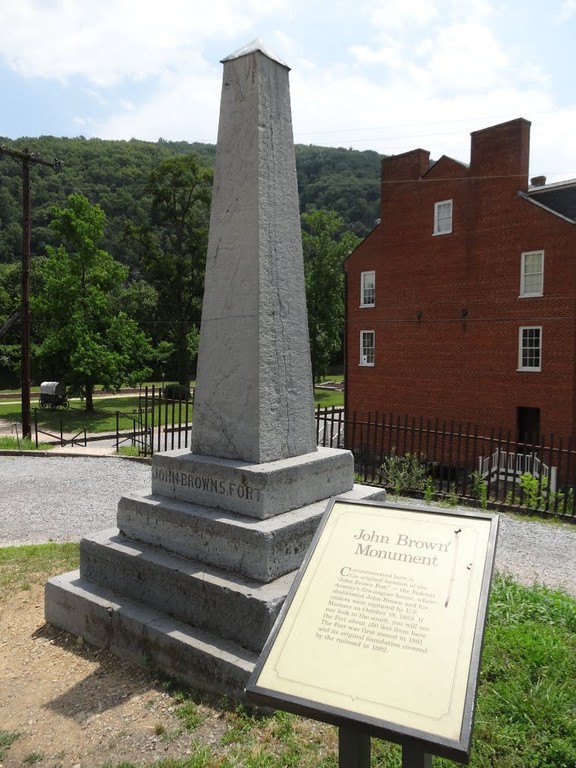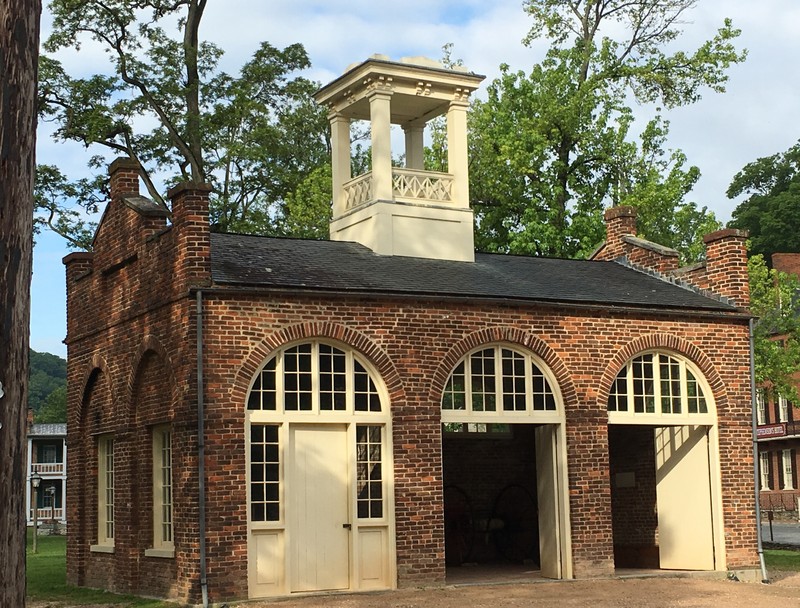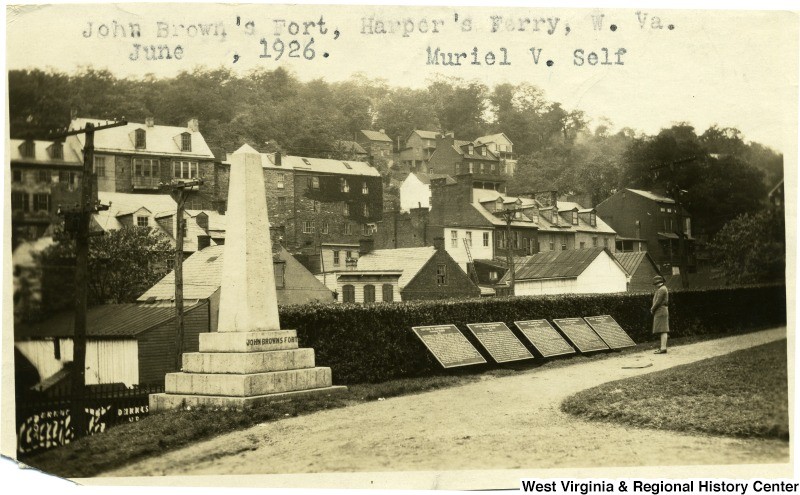John Brown Monument
Introduction
Text-to-speech Audio
Images
Placed by the B&O in 1895, this monument marks the spot where John Brown's Fort originally stood.

The armory's engine house, known as John Brown's Fort, today stands in Arsenal Square 150 feet south of the John Brown Monument. Image obtained from the National Park Service.

This photo from 1926 shows the 5 tablets placed by the government commemorating the Battle of Harpers Ferry. Image obtained from the West Virginia & Regional History Center.

Backstory and Context
Text-to-speech Audio
John Brown (1800-1859) was an exceptionally vocal abolitionist who believed that slavery in the United States could only be brought to an end by the use of force. He gained notoriety for his actions in the 1856 Bleeding Kansas crisis, including the Pottawatomie Massacre during which five pro-slavery settlers were murdered. After Bleeding Kansas, Brown began formulating a plan to raid the federal arsenal and armory at Harpers Ferry. His aim was to use the seized weapons to arm local slaves, and begin a nationwide insurrection to eradicate slavery. In July of 1859, John Brown rented the nearby Kennedy Farm under an alias and began preparations for his attack.
On the night of October 16, 1859, John Brown and a group of twenty-one supporters stylizing themselves as the “Provisional Army of the United States” swiftly succeeded in capturing the armory and taking several hostages. The plan soon began to unravel when the anticipated slave uprising failed to materialize; local slaves were not even initially aware of the raid and feared severe retribution to contribute. Local townspeople and militiamen trapped Brown’s men in the armory, inflicting several casualties. Brown and his surviving men were forced to barricade themselves and their remaining hostages in the armory’s engine house. On October 18, Col. Robert E. Lee arrived with a hastily-summoned company of U.S. Marines who then proceeded to storm the engine house. The hostages were freed; Brown and the other surviving raiders were captured. John Brown was later tried for treason and executed in Charles Town on December 2, 1859; his captured conspirators would all be executed as well. John Brown’s raid and his subsequent trial sent shockwaves through the nation and heavily divided public opinion. Some saw him as a hero; to others a terrorist. Brown’s belief that slavery could only be ended by violence would be realized two years later when the Civil War erupted in 1861.
The town of Harpers Ferry would be fought over several times during the Civil War and was severely damaged during the war. The federal armory, burned to the ground, would never be rebuilt; its only surviving structure was the engine house, by now known as John Brown’s Fort. In 1891, the fort was purchased and moved to Chicago for the World Columbian Exposition. Failing to attract many visitors, the fort was dismantled and sidelined. Around this time the Baltimore & Ohio Railroad was undergoing a project to reroute their railroad tracks over the old armory grounds. In 1895, the B&O erected an obelisk monument over the spot where John Brown’s Fort had originally stood. In 1897, the U.S. government added five tablets next to the monument honoring the capture of Harpers Ferry during the Civil War. Meanwhile John Brown’s Fort had been repurchased and moved from Chicago back to Harpers Ferry where it was placed on the Murphy farm. On August 17, 1906, members of the Niagara Movement held a memorial service at the fort in honor of John Brown. In 1909, the fort was purchased by Storer College and was relocated to its campus, where it remained for many years. In 1968, the National Park Service moved the fort a final time to Arsenal Square, about 150 feet south of the where it had first stood. The John Brown Monument remains at that original location today; the five tablets have since been replaced with a sign noting the original location of the fort.
Sources
Picture 1:
http://static.panoramio.com/photos/large/96637763.jpg
